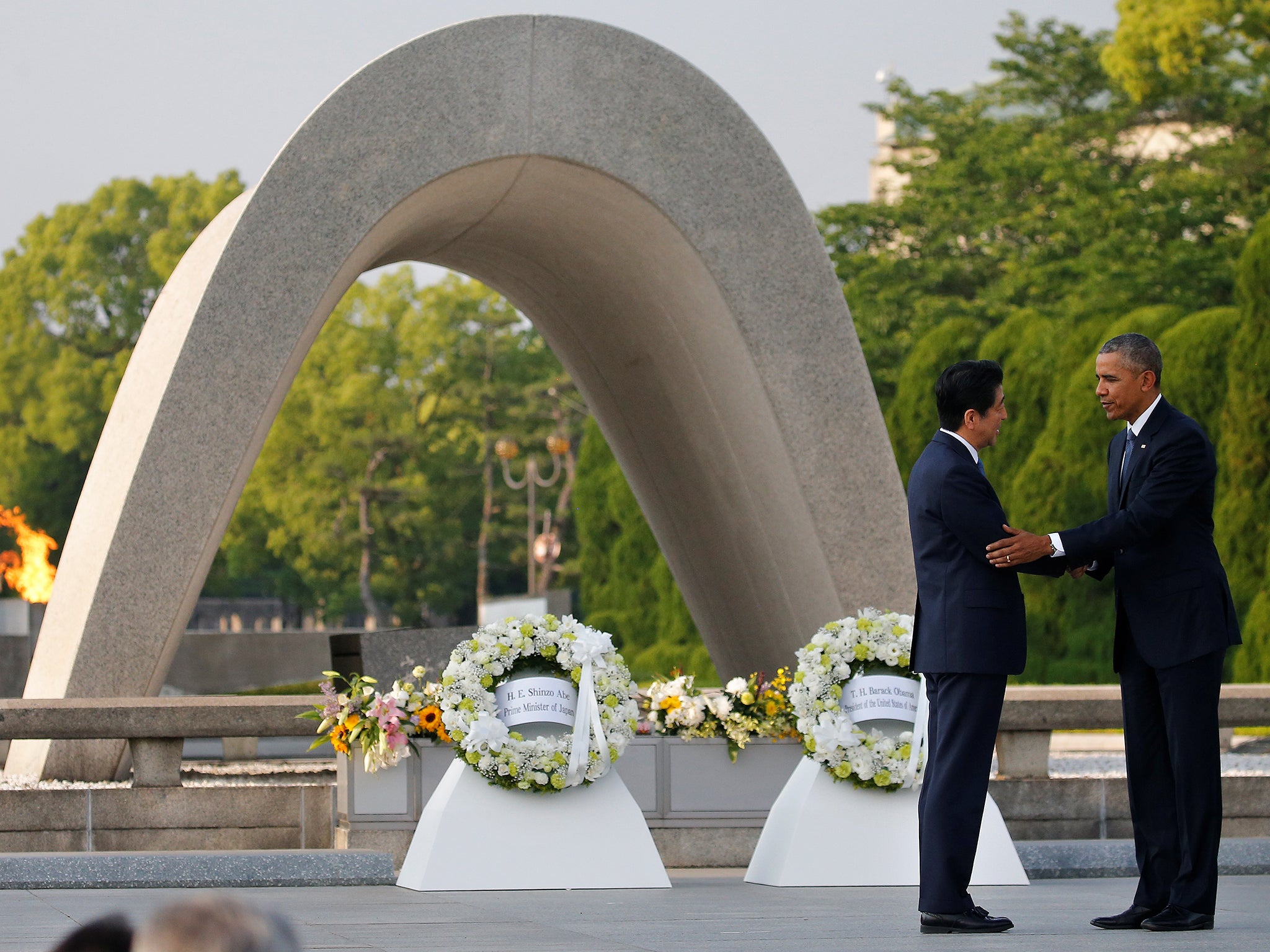The story of women scarred in Hiroshima reminds us the threat of nuclear war has never gone away
A decade after the atomic bomb killed and maimed thousands of citizens in the Japanese city of Hiroshima on 6 August 1945, the US brought 25 women to America for plastic surgery. Becky Alexis-Martin tells their story


An immaculately dressed woman moves forward in her seat, leaning on her walking stick. Her clear gaze is undaunted by age as she firmly declares, “No more atomic bomb, no more nuclear weapon, no more war.”
This is Shigeko Sasamori, an atomic bomb survivor. She is in conversation with peace activist Clifton Truman, the grandson of President Harry S Truman – the man who ordered the atomic bombings of Hiroshima and Nagasaki on 6 and 9 August, 1945. Sasamori was only 14 years old when she suffered burns to 25 per cent of her body. She is one of the so-called Hiroshima Maidens who visited America for reconstructive surgery in 1955.
It is now 75 years since Hiroshima was destroyed by Little Boy. In its aftermath, fires raged across the city. Concrete was seared salmon-pink by radioactivity and buildings crumbled from the blast. Death and cremation occurred simultaneously, as human bodies were reduced to ash and the traces of their shadows were scorched onto the ground. It is estimated that 135,000 people died - many of whom were women and children. Those who survived were stripped of everything except their lives, and many suffered life-changing injuries. They became the Hibakusha, meaning “the exposed”.
For seven long years, the US State Department forbade newspapers, magazines and books from publishing images of death or disfigurement due to the atomic bombings. However, it could not censor everything. When John Hersey’s 1946 New Yorker article “Hiroshima” revealed the experiences of six survivors, the American public became concerned.
An American-educated pastor, Reverend Kiyoshi Tanimoto, was one of the people profiled by John Hersey. He had created a support group for high school students with facial disfigurements, but he worried for their long-term prospects. By 1955, the women in this group had spent most of their lives as Hibakusha and felt isolated and stigmatised by their disfigurements. He decided to reach out directly for help from the pacifist editor of the Saturday Review of Literature, Norman Cousins. Together, Reverend Kiyoshi Tanimoto and Norman Cousins raised funds and created a programme to bring 25 young women from Hiroshima to America for the reconstructive surgery that they needed. These women became known as the Hiroshima Maidens.
The State Department was initially concerned that public sympathy for these women would fuel anti-nuclear activism and cause unrest. Instead, the visiting Hiroshima Maidens provided an opportunity for the USA to recast itself as a source of pioneering surgical expertise and philanthropy; as a sort-of medical Marshall Plan. This depiction was supported by the media of the time, who often neglected to mention that these women would have been unscathed without the atomic bombing – and that they represented a tiny proportion of the thousands of Japanese women who were scarred for life.
The Hiroshima Maidens were given a crash course on Western style and values by their Quaker host families in America. They received gifts of expensive tweed suits, elegant shirts and cashmere sweaters; before gaining a face fit for American marriage. It is no coincidence that some of the new surgical techniques that were used to treat the Hiroshima Maidens were later adapted and exported for cosmetic surgery. In total, 138 surgeries were performed on the women in 18 months. This included Hiroko Tasaka, who received 13 more surgeries than the others, and was described as “Champion Surgery Girl”. Long-lasting bonds were made between the host families and their Japanese guests, as they gradually recovered from their surgeries.
After surgery, some women decided to stay in America and become housewives, designers and nurses. Sasamori was adopted by the Cousins family and became a nurse. She is now 88 years old – while the average of Hiroshima and Nagasaki’s Hibakusha is 84 years old. The surviving Hiroshima Maidens are unique in remembering not only the trauma of the atomic bomb, but also the pain and happiness of extensive reconstructive surgery. Sasamori continues to promote world peace and advocate for the abolition of nuclear weapons.
In 1955, the people of America funded, encouraged, and supported 25 scarred Japanese women - a decade after their state had committed the world’s first atomic atrocity. As the USA and UK renew their commitment to a new generation of nuclear weapons, each warhead with the capacity to annihilate thousands, we must ask ourselves – is it still possible for us to save face?
Join our commenting forum
Join thought-provoking conversations, follow other Independent readers and see their replies
Comments